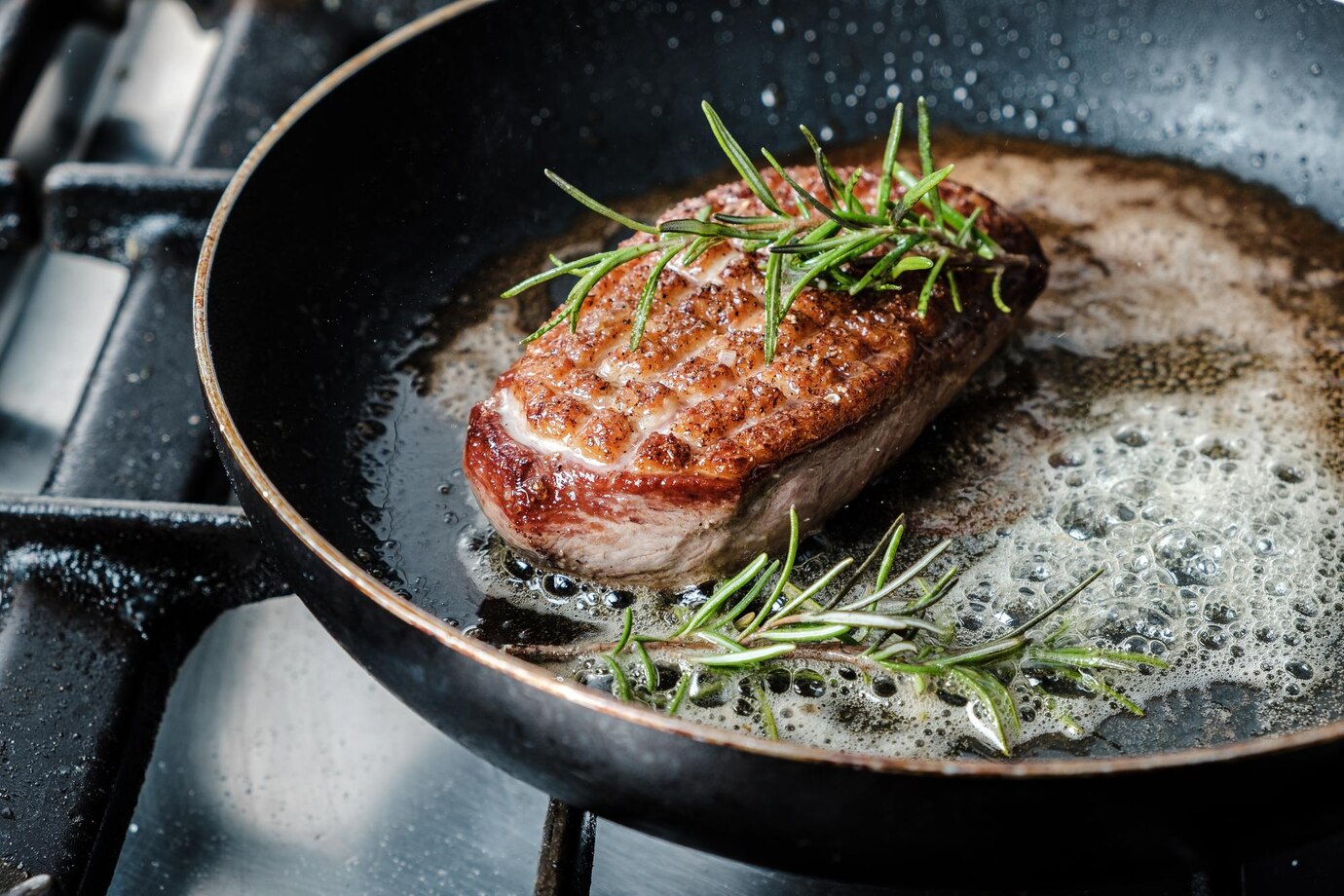Filet mignon is one of the most luxurious and tender cuts of beef, prized for its buttery texture and mild flavor. While many assume that cooking this premium steak requires a grill or fancy equipment, the truth is that a simple pan-seared filet mignon can rival any high-end restaurant dish—when done right.
In this guide, you’ll learn how to cook filet mignon in a pan like a pro, with expert tips to ensure a perfect sear, juicy interior, and restaurant-quality results every time.
Why Pan-Searing is the Best Method for Filet Mignon
Pan-searing filet mignon offers several advantages:
-
Perfect Crust: A hot pan creates a delicious, caramelized exterior.
-
Even Cooking: Better control over doneness compared to grilling.
-
Juiciness: Proper searing locks in natural juices.
-
Quick & Easy: Ready in under 20 minutes with minimal cleanup.
Now, let’s dive into the step-by-step process.
Step 1: Choosing the Best Filet Mignon
The quality of your steak matters. Look for:
-
USDA Prime or Choice Grade: Higher marbling means better flavor and tenderness.
-
Thickness: Aim for 1.5 to 2 inches for even cooking.
-
Color & Texture: Bright red with fine marbling; avoid grayish or slimy cuts.
-
Dry-Aged (Optional): Adds deeper flavor but is pricier.
Step 2: Bringing the Steak to Room Temperature
Cold steak cooks unevenly. Take it out of the fridge 30-45 minutes before cooking to ensure:
-
Faster, more even cooking.
-
Better searing (cold meat steams instead of sears).
Pat it dry with a paper towel to remove excess moisture—this helps achieve a crisp crust.
Step 3: Seasoning for Maximum Flavor
Filet mignon is mild, so seasoning is key.
-
Kosher Salt & Freshly Ground Black Pepper: Generously coat both sides.
-
Optional Enhancements:
-
Garlic powder
-
Rosemary or thyme
-
A light sprinkle of smoked paprika
-
Avoid over-seasoning; let the natural beef flavor shine.
Step 4: Selecting the Right Pan & Oil
-
Best Pan: Cast iron or stainless steel (retains heat well).
-
Best Oil: High smoke point oils like:
-
Avocado oil
-
Grapeseed oil
-
Clarified butter (ghee)
-
Avoid olive oil (low smoke point) to prevent burning.
Step 5: Searing the Filet Mignon to Perfection
-
Heat the Pan: Medium-high heat until smoking hot (2-3 minutes).
-
Add Oil: Just enough to coat the pan.
-
Sear the Steak:
-
Place filet mignon in the pan.
-
Press lightly for even contact (no need to move it).
-
Cook 2-3 minutes per side for medium-rare (adjust for preference).
-
-
Baste with Butter (Optional):
-
Add 2 tbsp butter, crushed garlic, and fresh herbs in the last minute.
-
Tilt pan and spoon melted butter over the steak for extra richness.
-
Step 6: Checking Doneness Without Overcooking
Use a meat thermometer for precision:
-
Rare: 120-125°F (soft, cool center)
-
Medium-Rare: 130-135°F (warm red center) – Recommended
-
Medium: 140-145°F (pink center)
-
Medium-Well/Well-Done: 150°F+ (loses tenderness)
Pro Tip: Remove steak 5°F below target temp—it will rise while resting.
Step 7: Resting for Juiciness
Resting allows juices to redistribute.
-
Let it rest 5-10 minutes on a warm plate (tented loosely with foil).
-
Do NOT cut immediately—this prevents dryness.
Step 8: Serving Like a Pro
-
Slice Against the Grain: For maximum tenderness.
-
Pair with:
-
Creamy mashed potatoes
-
Roasted asparagus
-
Red wine reduction sauce
-
Common Mistakes to Avoid
❌ Using a Cold Pan → No proper sear.
❌ Overcrowding the Pan → Steaming instead of searing.
❌ Skipping Resting Time → Dry steak.
❌ Overcooking → Filet mignon is best medium-rare.
Final Thoughts
How to Cook Filet Mignon in a Pan is simple yet rewarding. With the right technique, you can achieve a buttery-soft interior and a crispy, flavorful crust—just like a steakhouse.
Now that you know the secrets, it’s time to impress your family or guests with a perfectly pan-seared filet mignon!
Did you try this method? Share your results in the comments!
FAQ
Should I flip filet mignon multiple times?
No, flip only once for a better crust.
Can I use frozen filet mignon?
Thaw completely in the fridge first for even cooking.
What’s the best side dish for filet mignon?
Creamy spinach, garlic butter mushrooms, or truffle fries.
How do I reheat leftover filet mignon?
Low heat in a pan with butter to retain moisture.










